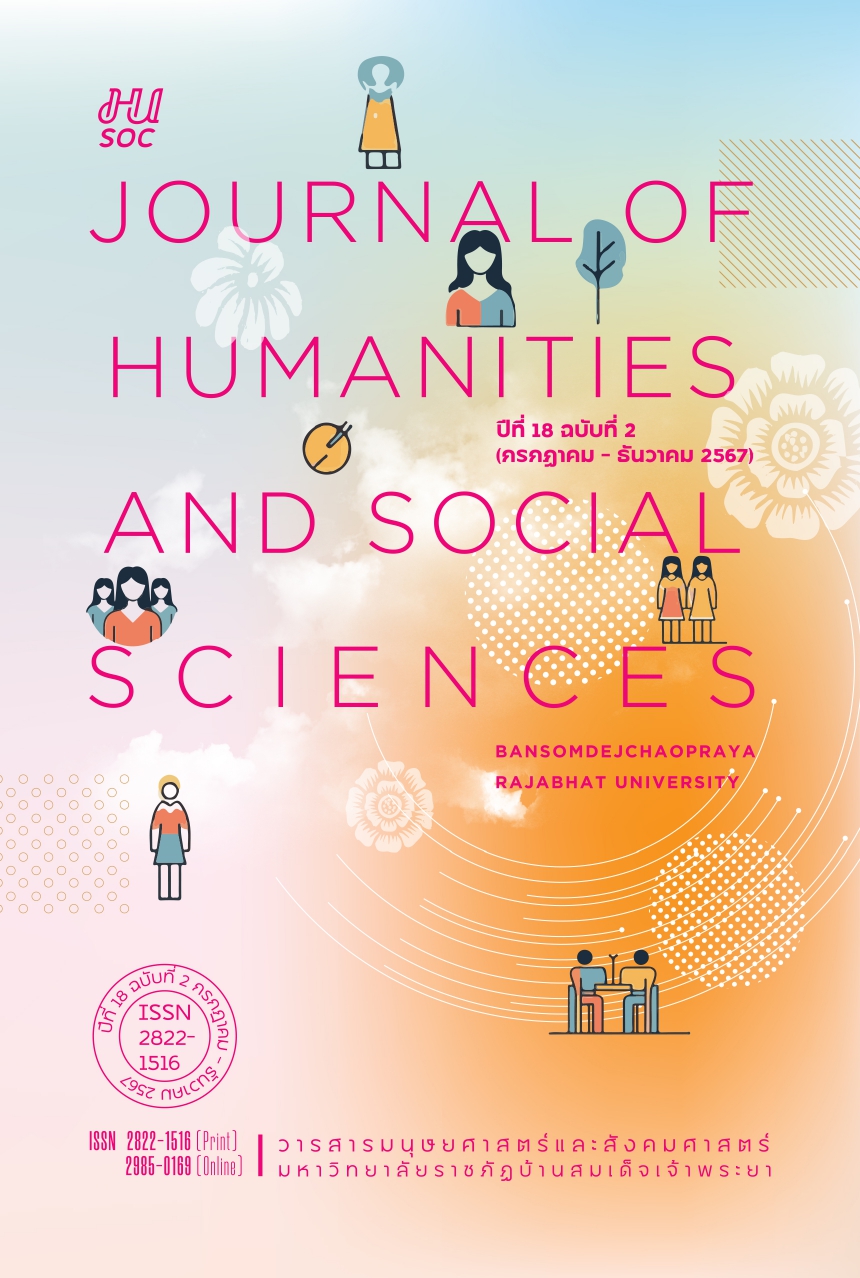Errors in Using Chinese Adjectives of “Emotions and Feelings” Made by Third-year Chinese Program Students, Faculty of Humanities, Chiang Rai Rajabhat University
Keywords:
Chinese Adjectives of Emotions and Feelings”, Types of Errors, Causes of ErrorsAbstract
This research study aims to investigate errors in using Chinese adjectives of “emotions and feelings” and analyze the causes. The study sample group consisted of 60 third-year Chinese Program students of Chiang Rai Rajabhat University. The research instruments included a questionnaire on the use of adjectives of “emotions and feelings” and a collection of articles written by these students, totaling 150,000 Chinese characters. The research findings reveal that a total of 423 errors in using these kinds of adjectives were made, and the errors were categorized into 6 types of meanings: 1) words expressing happiness, 2) words expressing anger, 3) words expressing sadness, 4) words expressing fear, 5) words expressing calmness, and 6) words expressing excitement. The type that the students made errors most frequently was words expressing happiness, at 207 times (48.93%), whereas errors in using words expressing anger were least frequently found at only 9 times (2.2%). Furthermore, the errors were divided into 2 types: 1) Errors of using words within the same type of meaning and 2) errors of using words with different types of meanings. Also, 5 causes of the errors were analyzed and then classified into 2 main groups, including 1) Chinese language interference (Chinese words with similar meanings, Chinese words with similar meanings but different grammatical structures, and Chinese words with similar meanings but different compound word usage) and 2) Thai language interference (translating word meanings from Thai and difference in meanings between Thai and Chinese words).
References
Cheng, J. (2011). Comparative Study on L2 Chinese Learner’s Confusable Words and Chinese Synonyms - Taking Psychological Verbs as Examples. [Doctoral of Linguistics and Apply Linguistics Program, Beijing Language and Culture University].
Jaiboon, C. (2018). Chinese Memory and Tteaching Strategies. Retrieved December 20, 2023. https://arts.dpu.ac.th/media/research
Jeangjai, S. (2009). The Analysis of Differences in Chinese Synonyms for Thai Learner. Journal of of Social Sciences & Humanities, 15(6), 1026 – 1036.
Lai, L. (2018). A study on the Confused Words in Chinese among Thai Learners. [Doctoral of International Chinese Education Program, Minzu University of China].
Royal Institute of Thailand. (2011). Royal Institute Dictionary. Royal Institute of Thailand.
Tungkawet, W. (2024). Characteristics of Error in the Use of Chinese Adjectives of “Emotions Feelings". Silpakorn University.
Zhang, B. (2007). Synonyms, Near-synonyms, and Confusional Words: A Shift in Perspective from Chinese to Interlanguage. Chinese Teaching in the World Journal, (3), 98-107.
Zhang, B.(2008). Confusing Words in Chinese Interlanguage for Second Language Learners and their Research Methods. Chinese Teaching in the World Journal, (6), 37-45.
Downloads
Published
How to Cite
Issue
Section
License
Copyright (c) 2024 Faculty of Humanities and Social Sciences Bansomdejchaopraya Rajabhat University

This work is licensed under a Creative Commons Attribution-NonCommercial-NoDerivatives 4.0 International License.



